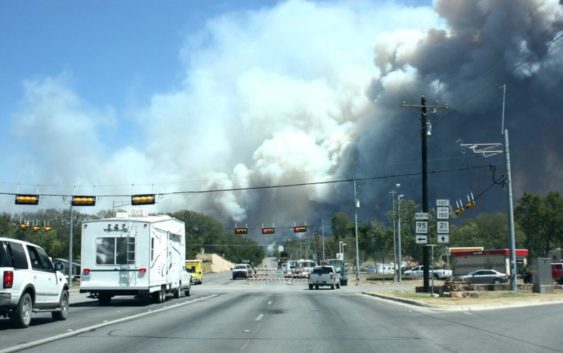- Impact Plastics not responsible for workers killed in Helene flooding, TOSHA says
- 'A little emotional': Hurricanes equipment manager got seconds in goal, memory to last a lifetime
- WMO retires three hurricane names after devastating 2024 season
- Beryl removed from future hurricane naming lists
- Hurricane names Helene, Milton and Beryl are now retired
Is Texas ready for the next big wildfire?

The highlight of the day…a prescribed burn. After a brief test fire, the landscape is ignited and crews spring into action. Trainees range from experienced firefighters to those experiencing their first fire. Kari Hines with the Forest Service helped to coordinate the training event. She explained exactly what the prescribed burn does for the land.
“Fire historically got rid of what we call ladder fuels and that those are the things lower limbs, small bushes that are growing underneath the mature crowns of trees in the ground. So when we do prescribed fires, we’re aiming to mimic that oftentimes, so we will lose some of these lowest limbs. But if a wildfire were to come through now, those limbs aren’t there anymore to burn.” she said.
Brad Smith is a meteorologist with the Texas A&M Forest Service. He says unlike other areas of the country, Texas has wildfire seasons almost year-round.
“We can be in a fire season any time that we see three to four weeks of extended drying” said Smith.
Smith stops short of admitting climate change will drive more wildfires in the future. But Texas state climatologist John Nielsen-Gammon said increased drought will definitely have an effect.
“We’re definitely going to have hotter droughts when they occur, which means things dry out faster and that by itself increases the risk of wildfire,” said Nielson-Gammon
The Texas State Climatologist’s Office recently released it’s report on future trends and extreme weather in Texas. The report says that the eastern area of Texas will be prone to more drought and wildfire, and the change could come on quickly as the climate gets drier from west to east.
“The way that plays out is trees die and they don’t get replaced, and the way large expanses of the trees get wiped out is through wildfire”, he said. “So that overall landscape transition that we expect to see happening over the next hundred years isn’t going to be the gradual transition. We might hope it will probably take place through wildfires from which the ecosystem doesn’t recover in the same way that it would have when the climate was cooler and wetter,” he added.
Back at Camp Swift, Kari Hines is worried that Texas residents may not be ready for the next major fire event in Texas.
“We have so many other disasters, whether it’s floods or ice storms or hurricanes that that get our interest, just getting people to realize that wildfires are something that happen and that they absolutely can do something to prepare for to decrease their chances of their home being lost or losing their lives. It worries me. I talk to a lot of people who don’t think wildfire is an issue,” said Hines
Nielsen-Gammon points out that although climate change is a political football, the professionals on the ground who are preparing for future wildfire events are mostly nonpartisan. What remains to be seen is if the average Texan is prepared for the next big fire.
You can find out more how to protect your home and property from wildfire at the Texas A&M Forest Service web page.